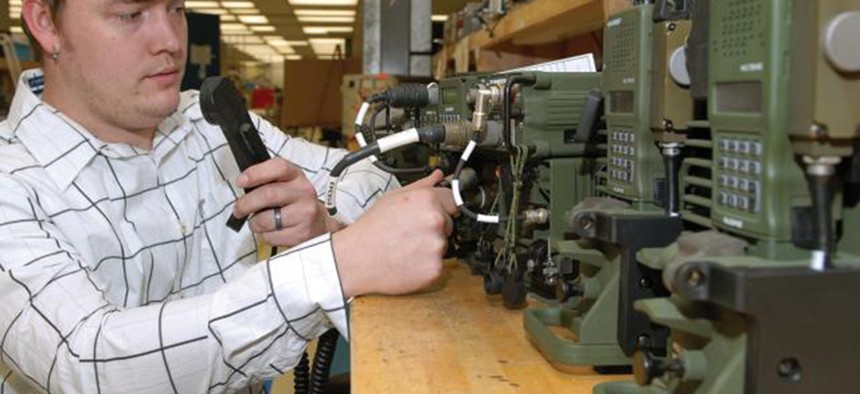
A technician at Tobyhanna Army Depot performs a system check on a series of radio systems. US Army Photo
Preparing for Future Catastrophes, the VA Reaches to the Past
The VA wants a network for two-way radio communication and links to national wired, cellular and IP phone networks in case a crisis knocks out standard communications. By Bob Brewin
The Department of Veterans Affairs plans to build a nationwide high-frequency radio network to connect its medical facilities in case of an emergency that knocks out other forms of communications -- applying century-old technology to current needs.
VA said in a contracting notice Tuesday it intends to award a five-year, fixed-price indefinite-delivery, indefinite-quantity contract for the fully functional "turnkey" Emergency High Frequency Radio Network.
VA plans to issue a formal request for proposals by Oct. 31.
The network will include an undefined number of high-powered “backbone” stations equipped with 200-watt transmitters designed to receive and automatically relay communications from 125-watt stations located at approximately 200 Veterans Health Administration facilities, VA said.
The network would provide emergency two-way radio communication and links to national wired, cellular and IP telephone networks enabling radio-to-telephone communications, according to the agency.
High-frequency radios operate in the three-to-30-MHz bandwidth and can transmit signals for hundreds or thousands of miles as the signals are refracted off the ionosphere. Changes in ionspheric conditions require HF radios to be periodically retuned, done automatically with a technology known as Automatic Link Establishment built into the radios. VA has specified ALE radios for its HF network.
Though outmoded by satellite and internet communications, HF networks still serve as an emergency backup for federal agencies, including the Air Force for communications with Air Force One as well as its transport, tanker and bomber fleets.
The Department of Homeland Security operates a high-frequency network called SHARES, which provides additional capabilities for users with a national security and emergency-preparedness mission to communicate when landline and cellular communications are unavailable.
The Federal Emergency Management Agency and the Army National Guard also operate national HF networks. The Centers for Disease Control and Prevention has set up the National Public Health Radio Network as a communications back up in all 50 states.
Bernie Skoch, a retired Air Force general, consultant and amateur radio operator, said high-frequency remains the only reliable long-distance communications capability that depends entirely on terminal systems for end-to-end communications.
“There is no copper, no fiber, no space segment and very thin network management requirements” -- just radios, antennas and the ether, he said.
That independence from complex infrastructures, coupled with relatively inexpensive portable and mobile packages, makes it ideal for command and control, disaster and continuity-of-operations systems, Skoch said.




